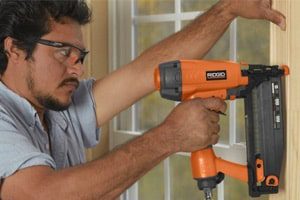
Young men in the work place are at increased risk for sustaining a nail gun injury, according to a new study. The injuries occur, for the most part, to the men’s non-dominant hand, according the Early View issue of Emergency Medicine Australasia, the journal of the Australasian College for Emergency Medicine, according to News-Medical. Doctors […]
 Young men in the work place are at increased risk for sustaining a nail gun injury, according to a new study.
Young men in the work place are at increased risk for sustaining a nail gun injury, according to a new study.
The injuries occur, for the most part, to the men’s non-dominant hand, according the Early View issue of Emergency Medicine Australasia, the journal of the Australasian College for Emergency Medicine, according to News-Medical. Doctors James Ling, Natalie Ong, and John North, from Brisbane’s Princess Alexandra Hospital, said nail guns are typically used in the building and construction industries because they increase productivity and because of their ease of use.
The researchers say that there has been an increase in injuries tied to nail guns, most especially in work settings; however, public consumers are also at risk, wrote News-Medical.
A prior study revealed that a three times increase was seen in Emergency Department (ED) presentations over consumer-related nail gun injuries in the period from 1991 to 2005. These figures coincided with pneumatic nail gun availability to the general public, according to News-Medical. Four cases—over 4.6 percent—of the injuries occurred in non-work-related settings.
Although the devices provide enhanced productivity, injuries resulting from nail guns cause significant losses of productivity, as well as financial costs, according to News-Medical.
Data from the Queensland Employee Injury Data Base reveals an average of 81 workers’ compensation claims for nail gun injuries annually over the past five years in Queensland. The injuries led to an average of 15 days off from work per case. “Whilst nail gun injuries involving the skull, chest, and abdomen have been reported, the vast majority of injuries occur to the upper and lower limbs,” according to the study’s authors, News-Medical reported.
The injuries typically take place in environments that are contaminated with nails containing metal barbs, polymer, or plastic, which can all become embedded in the wound. The nail might cause serious tissue damage due to the discharge of the nail with significant kinetic energy. Nail gun injuries may lead to direct soft tissue, tendon, and bone damage; infections; and septic arthritis, News-Medical wrote.
Of 87 cases identified in the study, conducted between January 2007 and July 2012, 58 percent of the participants required surgery, 32 were treated in the ED, and 10 percent were transferred to a private facility. Of those requiring surgery, 14 percent of the cases involved tendon, joint, or neurovascular injury, while 20 percent retained foreign material, according to News-Medical.


